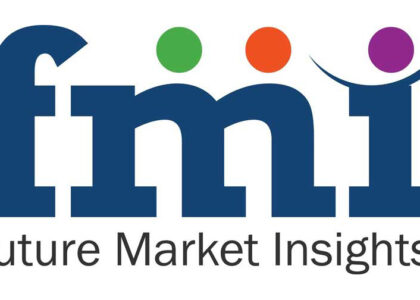 With a forecast valuation of US$ 2.07 billion in 2023 and expected to reach an estimated US$ 4.87 billion by 2033, the oncology nutrition market growth is expected to rise at a strong rate. An astounding average compound annual growth rate (CAGR) of 8.9% is predicted by the study throughout the whole prediction period, highlighting the growing importance and demand for oncology nutrition.
With a forecast valuation of US$ 2.07 billion in 2023 and expected to reach an estimated US$ 4.87 billion by 2033, the oncology nutrition market growth is expected to rise at a strong rate. An astounding average compound annual growth rate (CAGR) of 8.9% is predicted by the study throughout the whole prediction period, highlighting the growing importance and demand for oncology nutrition.
In medical nutrition therapy for cancer patients, oncology nutrition is essential because it helps patients cope with cancer treatments, improves their physical capacity, and ultimately raises their quality of life in general. Businesses in the oncology nutrition sector stand to gain a great deal from the growing understanding of the role that nutrition plays in cancer therapy.
The anticipated rise in the adoption of oncology nutrition products can be attributed to the growing recognition of the impact of cancer therapies on patients’ tolerance levels. Medical professionals increasingly acknowledge the crucial role of nutrition in mitigating the adverse effects of cancer treatments and optimizing patient outcomes.
Moreover, the implementation of nutritional screening and assessment protocols is becoming increasingly vital in identifying individuals at risk of malnutrition. Early identification allows for timely intervention, ensuring that patients receive the necessary nutritional support tailored to their specific needs.
As the demand for oncology nutrition solutions continues to escalate, stakeholders in the sector are actively innovating to develop advanced products and services that cater to the evolving requirements of cancer patients and healthcare providers alike. This drive towards innovation is poised to fuel further growth and development within the oncology nutrition market.
Get a Sample Copy of the Report :
https://www.futuremarketinsights.com/reports/sample/rep-gb-14411
Addressing Challenges in the Oncology Nutrition Market:
The oncology nutrition market faces several challenges as it strives to meet the escalating demand for nutritional support among cancer patients. Despite the critical role of nutrition in cancer care, various factors are influencing the market dynamics, necessitating innovative solutions and strategic approaches to overcome these hurdles.
With the global burden of cancer continuing to rise, healthcare systems worldwide are grappling with significant challenges. A consensus among medical professionals suggests that approximately 85% of cancer cases globally are linked to poor nutrition and sedentary lifestyles, highlighting the urgent need for effective nutritional interventions.
One of the primary challenges hindering the growth of the oncology nutrition market is the issue of tube feeding. Despite its potential benefits in delivering essential nutrients to cancer patients, inadequate reimbursement for tube feeding usage poses a barrier to its widespread adoption. Addressing this reimbursement disparity is crucial to unlocking the full potential of oncology nutrition solutions.
Moreover, a lack of awareness and understanding surrounding the importance of nutrition in cancer treatment presents a significant challenge. As the demand for oncology nutrition grows, bridging the gap in knowledge and education among healthcare professionals and patients is essential to facilitate informed decision-making and optimal patient outcomes.
Another obstacle confronting the oncology nutrition market is the absence of clear and comprehensive guidelines established by regulatory authorities. The ambiguity surrounding recommendations for oncology nutrition has relegated its importance to the sidelines for decades, impeding market growth and innovation. Clearer guidance and support from authoritative bodies are necessary to elevate the status of oncology nutrition and drive its integration into standard cancer care protocols.
Despite these challenges, stakeholders in the oncology nutrition industry remain committed to advancing the field and addressing the evolving needs of cancer patients. Through collaborative efforts, innovative solutions, and advocacy for policy changes, the industry aims to overcome obstacles and ensure that cancer patients receive the nutritional support they deserve.
Competitive Landscape of the Oncology Nutrition Market
New product launches and continuous technological innovations are the key strategies adopted by prominent players in the oncology nutrition market. The healthcare systems organizations are changing due to new research and increased public knowledge of the advantages of oncology nutrition. Clinical nutritionists and oncologists are working more closely to improve oncology nutrition and treatment within the oncology nutrition sector.
The presence of competitors, new product debuts, and partnerships related to the industry under consideration all contribute to the market’s growth. According to the report, Esperer launched its nutrition development center in Hyderabad in 2020. The facility in Hyderabad is expected to house a variety of cohesive capabilities, such as investigative workrooms and product development sub-centers, with a dedicated laboratory for analyzing sensory components, packing, and taste.
The leading firms worldwide for oncology nutrition are focused on obtaining regulatory clearances, developing cutting-edge goods, introducing new products, and partnering with and acquiring other businesses. The global market for oncology nutrition is projected to expand due to these leading players’ tactics. The following are a few expansion methods used by companies in the oncology nutrition market:
- To increase its presence in medical nutrition, Nestle acquired the Allergan business in January 2020.
- Smartfish AS and B. Braun worked together to introduce Remune, a medicinal nutrition solution, in September 2019. In 2019 and 2020, B. Braun introduced Remune in over 20 nations. Several other markets in Europe, Asia, and South America followed.
- Ina, the intelligent nutrition helper, was introduced by CancerCare in collaboration with Savor Health in 2019. The Ina offers tailored, evidence-based nutrition counseling to help cancer patients eat well and stay fed during treatment.
- A three-chamber bag with a unique protein-to-energy ratio called mofKabiven additional Nitrogen was introduced by Fresenius Kabi AG in 2018 in Europe.
- The SmartPN tool was introduced in October 2018 by Baxter International Inc. and the American Society for Parenteral and Enteral Nutrition (ASPEN) to reduce clinical malnutrition.
Request Report Methodology:https://www.futuremarketinsights.com/request-report-methodology/rep-gb-14411
Key Players in the Oncology Nutrition Market
- FMC Corporation
- Danone India
- Abbott
- Aceto
- B. Braun Melsungen AG
- Baxter
- Fresenius Kabi AG
- Global Health Products, Inc.
- Hormel Foods Corporation
- Mead Johnson & Company, LLC
- Meiji Holdings Co., Ltd
- Nestlé S.A.
- BioSig Technologies, Inc.
- Auris Health, Inc.
Key Segments
By Cancer Type:
- Head & Neck Cancer
- Stomach & Gastrointestinal Cancers
- Blood Cancer
- Breast Cancer
- Lung Cancer
- Other cancers
By End Use:
- Hospitals & Clinics
- Home Care
- Others
By Region:
- North America
- United States
- Canada
- Europe
- Germany
- France
- United Kingdom
- Italy
- Spain
- Rest of Europe (RoE)
- Asia Pacific
- Latin America
- The Middle East and Africa
Author By:
Sabyasachi Ghosh (Associate Vice President at Future Market Insights, Inc.) holds over 12 years of experience in the Healthcare, Medical Devices, and Pharmaceutical industries. His curious and analytical nature helped him shape his career as a researcher.
Identifying key challenges faced by clients and devising robust, hypothesis-based solutions to empower them with strategic decision-making capabilities come naturally to him. His primary expertise lies in areas such as Market Entry and Expansion Strategy, Feasibility Studies, Competitive Intelligence, and Strategic Transformation.
Holding a degree in Microbiology, Sabyasachi has authored numerous publications and has been cited in journals, including The Journal of mHealth, ITN Online, and Spinal Surgery News.
About Future Market Insights (FMI)
Future Market Insights, Inc. (ESOMAR certified, recipient of the Stevie Award, and a member of the Greater New York Chamber of Commerce) offers profound insights into the driving factors that are boosting demand in the market. FMI stands as the leading global provider of market intelligence, advisory services, consulting, and events for the Packaging, Food and Beverage, Consumer Technology, Healthcare, Industrial, and Chemicals markets. With a vast team of over 400 analysts worldwide, FMI provides global, regional, and local expertise on diverse domains and industry trends across more than 110 countries.
Contact Us:
Future Market Insights Inc.
Christiana Corporate, 200 Continental Drive,
Suite 401, Newark, Delaware – 19713, USA
T: +1-845-579-5705
For Sales Enquiries: sales@futuremarketinsights.com
Website: https://www.futuremarketinsights.com
LinkedIn| Twitter| Blogs | YouTube

